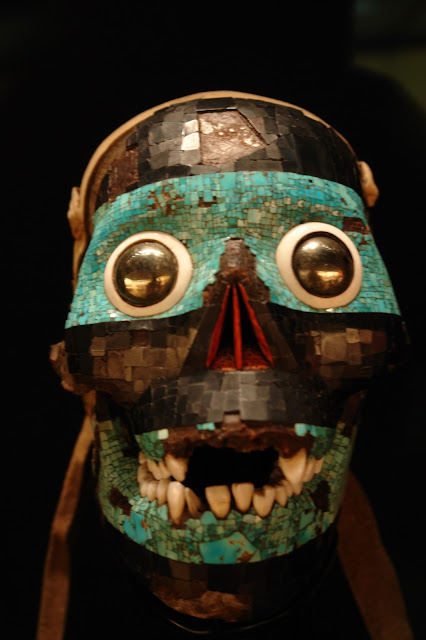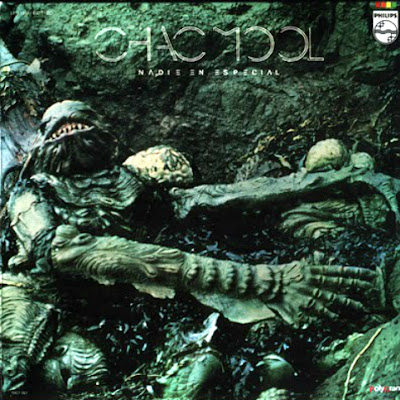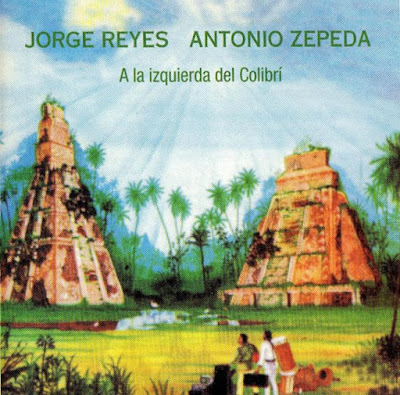Gift of Tezcatlipoca
In the old times that are lost in the mists of oblivion, the Earth was sad, monotonous and quiet place. God Tezcatlipoca saw that people are humourless and in lack of entertainment, and he hurried to the Sun’s court to ask the Sun if it is willing to send several of its musicians to the Earth, but the Sun rejects it. Angry and disappointed in his heart, Tezcatlipoca took a few of them and quickly came down to Earth to surprise humanity with a new thing – music. And since that day mankind enjoys the world of sound.
Times passed slowly. The sound of various brass and percussion instruments accompanied the man at every stage of life, from birth, through adolescence, marriage, until death. For every occasion there were different tunes and melodies.
Until one day furious Europeans came, destroyed the millennial culture in the name of their god and repressed all memory of the great civilization of old Mexico. Who knows how many Mesoamerican Homers, Shakespeare’s, Platos and Thomas Aquinas were lost forever in the abyss of oblivion. Tenochtitlan, Teotihuacan, Cholula, Tula… today are only dead monuments, subdued with brutal conquistadores hands, that mutely testify of the glory of its inhabitants.
However, the village knew how to survive, keeping the age-old secrets in the heart, or put the ancient rituals in the mask of Christianity behind the back of the colonizers. So Quetzalcoatl disguised in St. Thomas, Tonantzin in María de Guadalupe, and Mictlantecuhtli in Santa Muerte.
Original precolumbian music, although mixed with colonial influences, creating a whole range of styles from the Son Jarocho, Son Huasteco, Ranchera, Corrido, Norteño, survived in its authentic form, far from the ears of white invaders, and more and more foreign to the upcoming mestizo population.
After he returned from his travels in which he toured the whole world, Jorge Reyes directed his interest toward still unexplored music of the Mexican Indians. Listening to this mysterious music was the immersion in the dark essence of Mexico, unimpaired by colonial influences. Hypnotic sounds of flutes and percussion instruments were a vivid onomatopoeia of the untamed wilderness. Ocean waves that crash on the rocks, the wind whispering through the palm leaves, scream of the rainforest beasts … everything is so wonderfully shaped in the music.
The influences of this music are very evident on the album Nada en especial, of Reyes’s then- group Chac Mool. Some of the songs are in the typical late symphonic rock style, while others, in whose creation participated directly Reyes himself, are showing a clear influence of pre-Columbian sounds.
which I would particularly like to emphasize Ek Tunkul and Comala, whose sound
is definitely coming out of Moctezuma’s empire and seeks refuge in the
ambiental world of progressive electronic, drawing the whole range of
Mesoamerican history and mythology.
prehispanic music, but his creation is overwhelmingly focused on an attempt to represent
the original sound of precolonial Mexico, and in this context I would like to
compare him with the Italian musician and musicologist Walter Maioli, who also
reconstructed the prehistoric and antique music. Zepeda’s art is the most
obvious is the album Templo Mayor, recorded in ancient Aztec temple in the
center of Tenochtitlan (now Mexico City).
It is also worth noting that Zepeda is the author of the soundtracks for movies as Retorno de Aztlan and Apocalypto.
together they recorded the album Izquierda de Colibrí, which is in my opinion
close to the masterpiece. The sound is very similar to Reyes’s already
mentioned album, and it can serve as a good introduction to the prehispanic
music for beginners. The eponymous song, “Izquierda de Colibrí”, is
inspired by one poem of the poet king from Texcoco, Nezahualcóyotl. The rest of
the album follows the same concept of the earlier albums of Reyes and Zepeda.
En el ombligo de la Luna from 1981, is also noteworthy. Here the prehispanic
sounds are placed in the context of space rock. I definitely think that this
album deserves far more attention than it has been given. Never heard fans of
the genre mention it, though it certainly could be interesting to the fans of
bands like Ash Ra Tempel, Algarnas Tradgard or Taj Mahal Travelers.
Xavier Quijas Ixayotl, whose concept we could compare with Antonio Zepeda.










